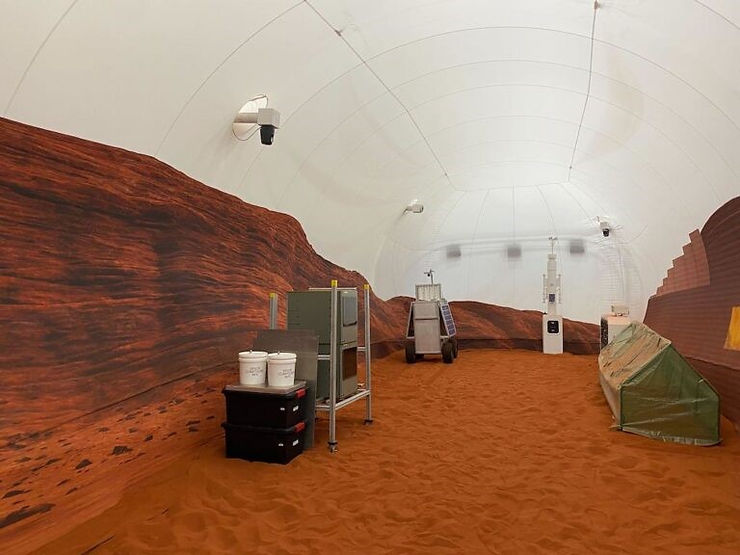By: Jessica Jin
On June 25, four volunteers, Kelly Haston, Ross Brockwell, Nathan Jones, and Anca Selariu, started a year-long simulation of a mission on Mars at NASA’s Johnson Space Center. They will go through challenges every day that astronauts on Mars would face. This simulation will help scientists prepare for a real Mars mission.
The four volunteers, who were picked out of 4,000 candidates, will stay in total isolation in a residence that was made to simulate how astronauts would live on Mars. NASA had made sure that this “habitat” would have the same restrictions that Mars has, but these structures will have everything the “astronauts” will need. One room in this habitat is a dome shaped room with sand on the ground to represent Mars’s surface. The walls have landscapes to represent a spacewalk on Mars. Some other rooms are sleeping quarters, bathrooms, and an area to grow their own food.
The habitat is built using modern 3D printing technology for buildings. This is like a smaller scale 3D printing, but it is printed with concrete instead of small threads of plastic, and it’s much bigger. This technology is used to make new houses faster and cheaper than traditional construction. The 3D technology uses robots to print out structures layer by layer using concrete. NASA finds this new technology promising, so they’ve started to make some of their projects with it, such as the Mars mock mission.
Each volunteer has a job, such as a medical officer or mission commander. They will also need to solve new and unexpected problems daily. These problems would most likely happen to astronauts if they really did go to Mars. This simulation is for scientists to see how humans will work and, over time, adapt to living on Mars. They will study how the volunteers work with each other and how well they get along.
When the year is over, scientists will have a realistic idea of how life on Mars would be. They can use this information to figure out how to make Mars more habitable in the future.











